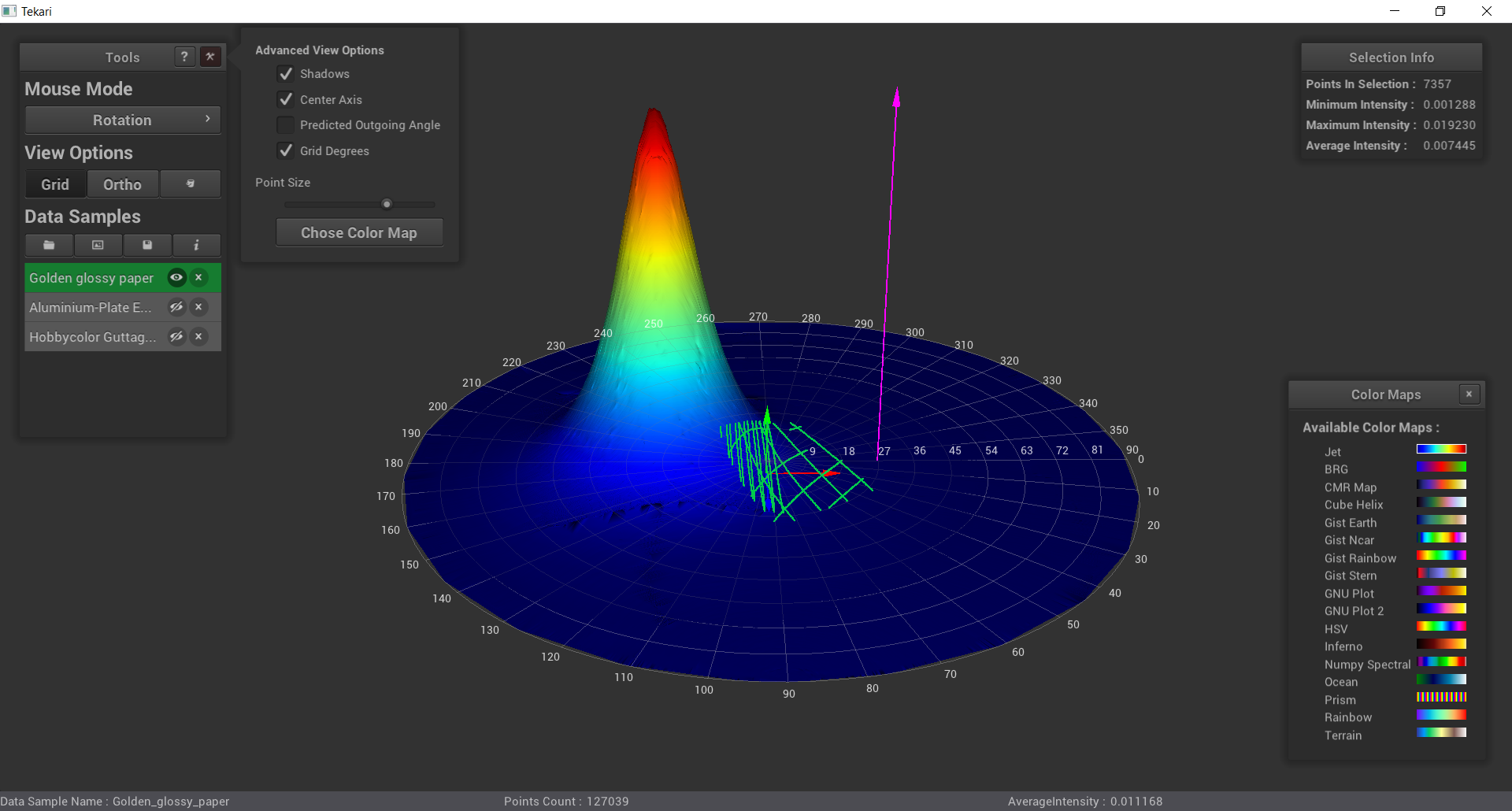A BSDF-data visualization and editing tool.
 A example of workflow with Tekari, with multiple files open, some points selected and the color map selection window displayed.
A example of workflow with Tekari, with multiple files open, some points selected and the color map selection window displayed.
You can launch Tekari in the command line and specify data samples to be loaded as command-line arguments:
./tekari data_set_1 data_set_2 ...
This will launch Tekari and open the specified files, assuming they are in the correct format (see file format).
To get started using Tekari, you first need to load a file, either using the command line, pressing the open file button (folder icon), or using Ctrl-O. Once you have a data sample loaded, you can interact with it in many ways:
- look at it from any angle (by left-dragging the mouse on the canvas)
- zoom in and out (using the mouse wheel)
- translate it (by middle-dragging the mouse)
- or also slect points (by right-dragging the mouse)
These are just the basics features that allow you to take a closer look at your data. If you want a more detailed explanation of the features (and associated shortcuts) supported by Tekari, you can just click the help button (top right of the tools window) or just press 'H' to bring up the help window.
The two file formats Tekari supports are:
- standard or spectral data samples: these are texte files containing raw BSDF measurements generated by pgII.
- bsdf files: binary files with the .bsdf extension, computed from pgII measurements and processed following the paper An Adaptive Parameterization for Efficient Material Acquisition and Rendering by Jonathan Dupuy and Wenzel Jakob.
pgII is a goniophotometer used by RGL at EPFL. It is used to analyse the intensity of light reflected by a material at a given wavelength, or accross all the visible spectrum. It does so by scanning a material sample, following a hemisphere path, capturing the reflected light at precise angles. These raw measurements result in list of points with the format theta phi intensity (theta and phi being the angles, in degrees, at which the given intensity was measured). The format also includes some metadata at the beggining of the file, and even if most of it isn't required for Tekari to correctly load the file, the spectral data requires the first line (as there is no file extension distinguishing standard and spectral file formats).